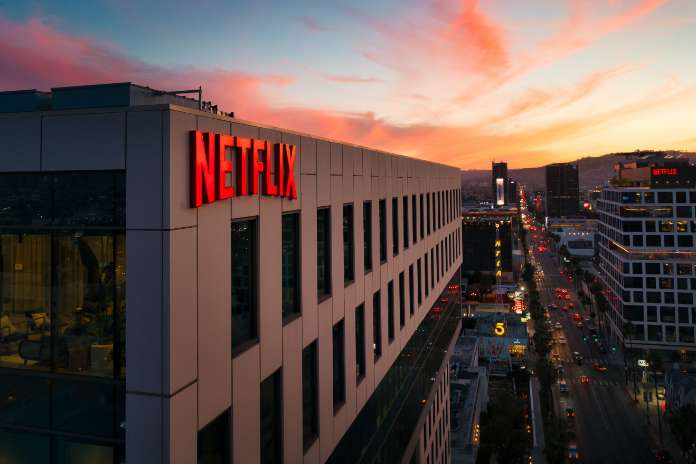Over the past year, Netflix stock (NASDAQ:NFLX) has done worse than the S&P 500 and the Nasdaq 100 by about 2.65x and 1.53x, respectively.
Given how much relative disintegration has already happened, will things turn around, especially since a possible catalyst is coming up in about two weeks? Netflix plans to announce its Q4-22 results on January 19, after the stock market closes (6 PM EST). This could be a big deal for the stock’s future. Even so, here are a few things to consider if you want to invest in Netflix before the results come out.
What Should We Look for in Q4 Results?
At the Q3 results event on October 18, Netflix management said that Q4 revenue would likely slow from Q3 and end up being close to $7.77 billion (Q3 revenue was $7.92 billion). If that happened, we could expect another quarter of lower-than-expected year-over-year revenue growth, with a figure of +1%. For those who don’t know, annual revenue growth per quarter has been going down for six quarters in a row since it peaked in Q1-21 (not including Q4-22).
Still, the real numbers will not be as low as $7.77 billion when they are released on the 19th. This is because the dollar has changed since the last time Netflix reported its quarterly results.
When management was giving guidance for the future, they also said that Q4 revenue growth would be closer to 9% in terms of constant currency. That would have meant a -8% negative FX impact on the revenue line (the negative impact in Q3 was -7%), but the actual impact is likely to be much lower since the dollar index has gone up by 7% since Netflix’s last earnings report.
Consensus has already made some FX adjustments since the current sell-side estimate for Q4 revenue is $7.83 billion. Even at those levels, though, year-over-year revenue growth would only be 1.7%, which means that YoY growth would slow for another quarter.
Investors can be more optimistic about net additions of subscribers because the fourth quarter is usually excellent. For some background, net additions fell by more than 1.1 million between Q1 and Q2, but they rose by 2.4 million in Q3.
The company’s average revenue per member (ARM) grew by an impressive 8% in Q3, compared to 6% and 7%, respectively, in Q1 and Q2. But since Q4 of last year had a high base effect (7% growth compared to 4% and 5% in Q3 and Q2), it may take a lot of work to beat the Q3 run rate. In 2023, the ARM could benefit if the company stopped people from sharing passwords and made money off of it (potentially 322m households could come under the net)
Investors will want to know how well the company’s low-cost, ad-supported subscription plans did. These plans were released in the first week of November in 12 global markets and account for $140 billion in brand advertising spent in streaming and TV. Antenna says that only 9% of new subscribers signed up for the “Basic with Ads” plan in the first month it was available, which shows that it hasn’t been very popular. Also, only 0.1% of the existing subscribers in the United States switched to the ad plan.
It would be too soon to say this isn’t true, since Netflix plans to start making money off of account-sharing next year by making profile transfers (moving recommendations, settings, etc.) and sub-accounts easier. When they do this, the plan for cheaper ads will get a lot more attention.
Expect FX to affect operations, though it may be better than Q3 given how the dollar has changed since then (FX had a negative impact of 400bps on the Q3 margin). Expect FX effects to have a big impact on Netflix’s long-term prospects in the next few years, since the costs of licensing more and more content worldwide are paid for in dollars. Aside from changes in currency, investors should keep in mind that the company usually spends more on content and marketing near the end of the year (especially around festivals and holidays), which could greatly affect operating margins.
I would also keep an eye on how the company is doing in gaming, which it started doing last year. As of 9M-22, they had about 35 games on service and talked about getting more people to stay. I’d like to know what makes people stay with Netflix and how many IP-based games they plan to add next year.
Management also said that free cash flow would be around $1 billion by the end of the year. It’s important to note that total FCF was already at $1.28 billion as of 9M-22, so there could be big cash outflows of $100-$300 million in Q4.
Also, Netflix had $6.1 billion in cash on hand at the end of 9M-22, which was 5% more than in 6M-22. This number is expected to go down in Q4. The company’s policy is to keep enough cash to cover two months of sales. Extrapolating the estimated $7.8 billion in sales for Q4 gives a cash balance of about $5.2 billion. A big part of the drop is because Animal Logic, an Australian company, was bought in October and paid for with cash only. Even though no official numbers have been made public, the Sydney Morning Herald thinks the amount of money was “substantial.”
Should You Buy Netflix Stock, Sell it, or Keep it?
The price marks on Netflix’s long-term chart have been telling us a few things. First, the stock had been going up for almost eight years in the shape of an ascending broadening wedge or an ascending megaphone pattern (until Q1-22). In April 2022, this ended when a big red candle closed well below the lower boundary.
After that, there was a sort of pullback but look at the size and shape of the pullback candles. They’re all small, which shows a big lack of conviction, which may have come mostly from the retail cohort. This looks more like a bearish flag pattern, with another leg downcoming.
If you believe the glass is half full, you might think that this pullback will continue until it cancels out the red candle of April 2022, just below $400. This would also match up with a resistance zone from 2018 to 2019. But the big institutions need to come back to the table if we want to see that consistent strength. That’s not true at all right now. Recent data shows that the number of institutional investors and net shares they own has been decreasing since early October. The drop in December, especially for the number of net shares owned, was especially big.
The fact that Netflix stock is already trading higher than the average price target of Wall Street analysts, which is $304.69, doesn’t help.
Regarding analyst positioning and how it affects forward valuations, the average EPS figure for FY 2023 is currently $10.6. This gives the stock a forward P/E of 29.1x, which is a good multiple given that the stock’s 5-year historical average forward P/E was 40x.
But think about how much the earnings growth is for a 29x multiple. With an EPS of $10.60, annual earnings growth is only 2.2%. Forward revenue growth is likely to be higher, at 7%. This means that the forward PEG is more than 13x, which is very expensive. For context, Netflix’s average forward PEG range has been much lower in the past, from 2x to 7x.
Lastly, I’ll talk about how Netflix stacks up against other companies in the same industry (as represented by the XLC ETF). Between May and June of last year, you could have said that Netflix was a potential mean-reversion candidate in the communication services space because it was trading below the midpoint of its 10-year range. That is no longer the case, as the stock looks slightly overbought compared to its peers.
Overall, Netflix’s business prospects may improve in 2023, but I see little reason to buy the stock at these prices. Netflix is a Hold.
Featured Image: Unsplash © Venti Views
















